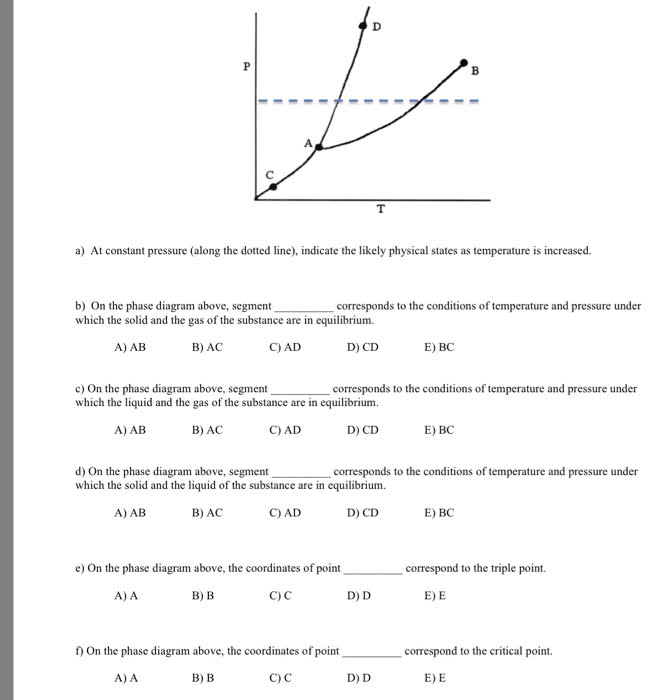CHY 102 Lecture Notes - Lecture 41: Triple Point, Sodium Chloride, Intermolecular Force
Document Summary
Line segments (ac, ad, ab) represent certain t & p at which the substance is in equilibrium between two states. Triple point (a) represents the unique t and p at which solid, liquid, and gaseous states are in equilibrium. Critical point (b) represents the t & p above which a supercritical fluid exists. Above this temperature, liquid state will not form. Pressure required to liquefy gas at critical temperature. A(cid:271)ove (cid:272)riti(cid:272)al t & p, fluid is (cid:862)super(cid:272)riti(cid:272)al(cid:863) E. g. quartz solids have facets, cleave along well defined planes. Amorphous: short-range order solids melt over range of temperatures. E. g. ar(s), h2o(s), c6h12o6(s) low bp & mp. Electrical insulators soluble in solvents of similar polarity. Melting point depends on strength of intermolecular forces. E. g. nacl (s), cscl (s), zns (s), caf2 (s) Bp & mp depend on surface charge density of ions. Mp of mgo = 2852 c; mp of nacl = 801 c. Bonding: metal ions in a (cid:862)sea(cid:863) of valen(cid:272)e ele(cid:272)trons.


